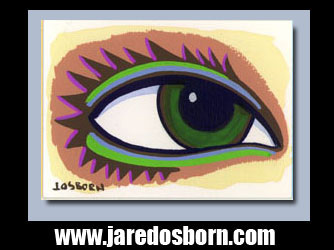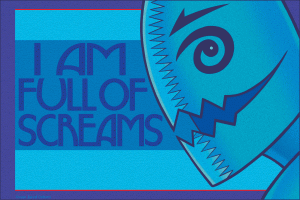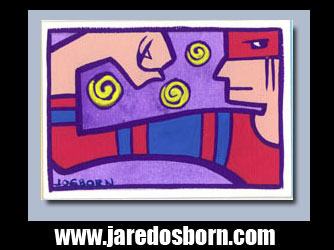Since my purchase of art supplies last week I’ve been a little obsessed with magic markers. This might not seem so strange since I bought a few new markers, have been trying them out, and have done some work with them but it really is strange because I don’t have a whole lot of uses for magic markers. At least the colored ones.
I certainly use many black magic markers for my initial thumbnail drawings and wouldn’t want to give them up because they’re such a useful tool but after the thumbnail stage I don’t use markers much. And I don’t have much call for colored markers at all. Yet they’re so cool.
The only time I’ve been using colored markers is when I make my “Cartoon Art Cards” that can be seen at this blog on Sundays as my “Drifting and Dreaming” comic strip. The cards are small and the coloring is not sophisticated in terms of technique so I’ve always just used some cheap-o markers to do that job. That’s all I really need for that. No expensive “Design and Illustration” markers necessary.
It could be nostalgia that’s making me more interested in magic markers than I should be. Back in my freshman and sophomore years of college (84-86) markers were the first color medium that I learned to be good with. I used to make all sorts of color marker drawings and sketches as I studied commercial art. I was skilled at using them and had fun with them. When I moved on to study fine art I learned a lot more about color and learned to use paint. Paint is much more versatile than marker can ever be and easily blows them away for finished work but I still used my markers a bit in the preliminary sketch stage. Then computers changed that.
It was in 1996 that I bought my first computer. After that Illustrator and Photoshop served all of my preliminary sketch color needs. The computer became even more convenient than markers. It was so much easier to make changes on a color sketch. I could run through a whole bunch of different color schemes in a fraction of the time it would take me to color them with a marker. After that my colored markers were sent to the closet.
Gouache is one of the mediums that I have used for years. It’s a watercolor but instead of being transparent it’s opaque. I usually only make small gouache paintings. While my oil paintings can be as large as three by four feet my gouache ones are measured in inches. My normal size is five by seven inches but sometimes they go a little bigger. But not much. I like to keep my gouache stuff small. It speaks to me at that size.
In that spirit I decided to try and make some color marker drawings at five inches by seven inches. Turned out that I didn’t like them. They just sat dull and lifeless to me. I have no problem with the smaller, baseball card sized, marker drawings that I had made previously but I thought the five by seven inch ones would have looked a lot better if I had done them in gouache. I really have no idea how to make a good finished drawing in colored marker nor do I have any idea why I’d want to.
You would think that this determination would deter my interest in markers but it hasn’t. I’m still going online and looking at various markers and oohing and ahhing at all the cool sets. They’re neat. I think the main attraction of them is instant color. That’s what markers are. Uncap them, make a line, and get color. Unlike paint of any kind the markers instantly dry. There is no transition from wet paint to pure color. It’s pure color from the tip of a pen. That’s cool even if it doesn’t make for a finished piece.
Colored pencils don’t give you instant color. With a colored pencil the color of the paper almost always shows through. You have to bear down on the pencil to really cover the paper color and even then it won’t always cover well. If you want red it’s scribble, scribble, scribble then red with some flecks of white (the paper color) in it. That’s why a lot of colored pencil drawings are done on toned paper. If the paper color is going to show through an artist may as well take advantage of that fact. With a magic marker its scribble then instant red.
It might also be that magic markers appeal to the collector in me. Collectors like to acquire things, put them in order, and have complete sets. That’s how markers are sold. You can buy them one at a time and build your own palette of colors or buy the prearranged sets they sell. For some reason I wanted to buy a bunch of blue ones. Maybe because I like the one new blue marker I have.
One final odd thought from marker land. I still have a whole bunch of my old markers. Some of them are twenty five years old and they still work! Yet those ones don’t interest me at all. It’s like I dismissed them from my mind years ago so they don’t count. It could also be that I know I’ve had no real use for them for fifteen years. But then why do I think I’d have a use for the new ones? The mind is a strange thing.





